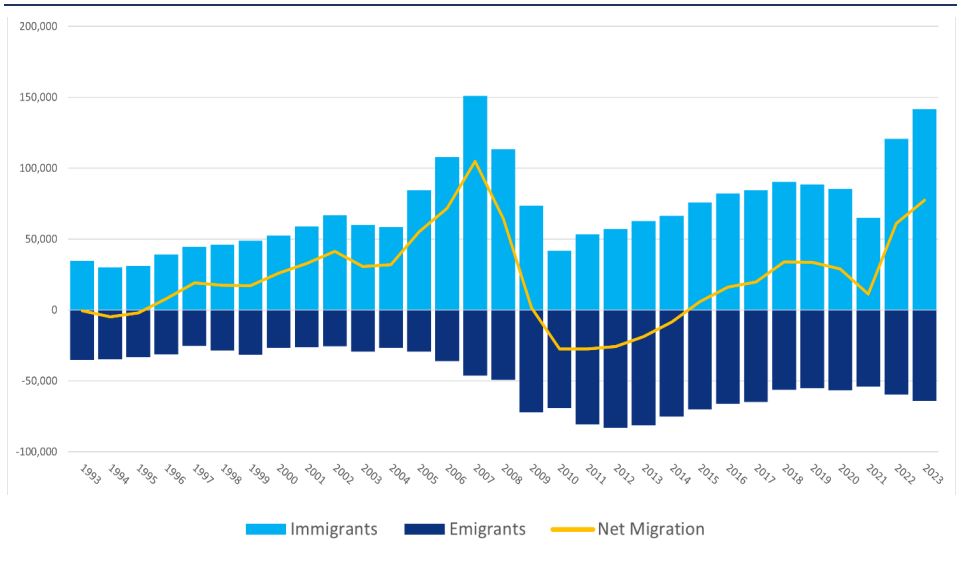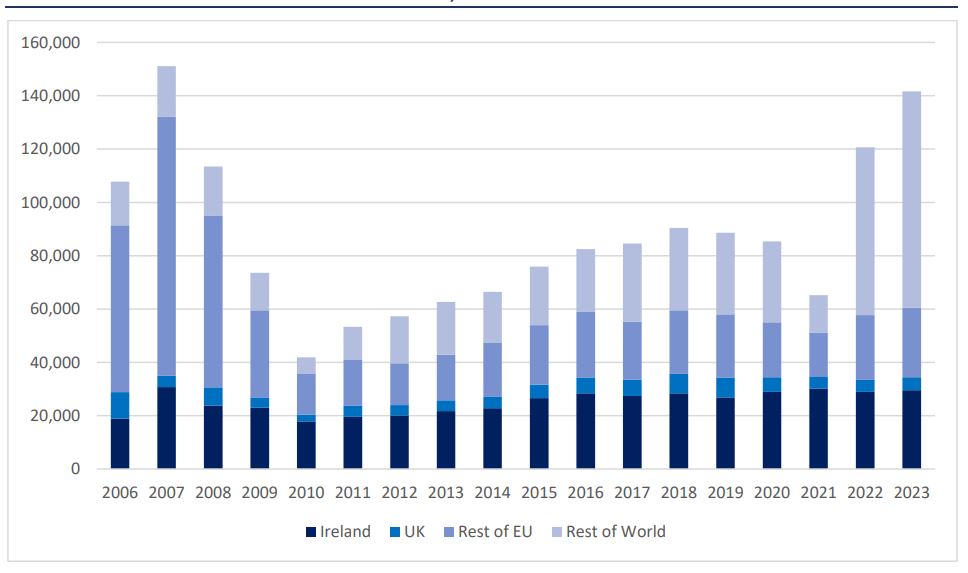Ireland has seen a significant increase in immigration, up 31% on last year.
An ESRI annual review of migration and asylum shows the end of COVID-19 travel restrictions were a factor, as well as the Russian invasion of Ukraine.
Some 141,600 people arrived in Ireland in the year to April 2023, according to CSO figures.
This represents a 31% increase from the same period last year.
Emigration also increased, with 64,000 individuals leaving the State, marking a 14% increase from the previous year.
 Gross and net migration to and from Ireland, 1993-2003. Source: CSO
Gross and net migration to and from Ireland, 1993-2003. Source: CSOThe report analysed international protection, showing "significant increases" in applications as well as details of applications, decisions made and statuses awarded.
It shows that applications for international protection in Ireland accounted for 1.3% of the European Union total in 2022.
A total of 13,651 applications for international protection were made last year, marking a significant increase from previous years and the highest number of asylum applications on record in Ireland.
The top three countries of origin among applicants were Georgia, Algeria and Somalia.
There was also an increase in the number of pending applications at the end of 2022 compared with previous years, to 14,865.
 Estimated immigration to Ireland, 2003-2023. Source: CSO
Estimated immigration to Ireland, 2003-2023. Source: CSOLast year also saw a significant increase in first residence permits, which are granted to migrants from outside the European Economic Area.
Some 85,793 permits were issued in 2022, with education the most common reason at 48%.
The number of employment permits issued was the highest in the last 10 years, with 39,995 employment permits issued.
The information and communication sector saw the largest amount of permits.
The Temporary Protection Directive - an EU Directive that creates an exceptional measure to provide immediate and temporary protection in the event of a mass influx of displaced persons - was triggered for the first time in March 2022, following the Russian invasion of Ukraine.
 Number and location (based on PPSN allocations data) of arrivals from Ukraine. Source: CSO
Number and location (based on PPSN allocations data) of arrivals from Ukraine. Source: CSOAs of December 2022, 67,448 people had arrived in Ireland from Ukraine under the Directive, according to Personal Public Service Number (PPSN) data.
Almost half (46%) of the arrivals were adult women, one-third (34%) were children aged up to 19 years and the remaining one-fifth (20%) were adult men.









